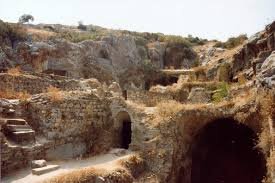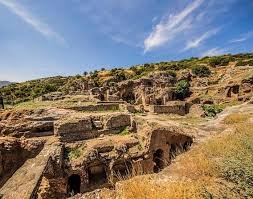Deep within the rocky landscapes of Jordan lies the Cave of the Seven Sleepers, known in Arabic as Kahf Al-Raqeem. This ancient site holds a unique place in both Islamic and Christian traditions, shrouded in mystery and revered as a symbol of divine protection and resurrection. The cave is believed to be the resting place of a group of young men who, according to legend, slept for centuries to escape religious persecution. Their story transcends time, making the cave a pilgrimage site for believers and a point of fascination for historians and archaeologists.
The Legend of the Seven Sleepers in Religious Texts
The tale of the Seven Sleepers is mentioned in the Quran in Surah Al-Kahf (The Cave), where it serves as a testament to God’s power over time and life. According to Islamic tradition, these young men, along with their faithful dog, sought refuge in the cave to escape a tyrannical ruler who demanded they renounce their monotheistic beliefs. They fell into a deep slumber, only to awaken centuries later, unaware that the world outside had changed. A similar version of this story exists in Christian tradition, where the Sleepers are known as the “Seven Sleepers of Ephesus.” The blending of these narratives makes the cave a rare example of a religious site honored by multiple faiths.
Historical and Archaeological Significance
The Cave of the Seven Sleepers is not just a place of legend—it is also an archaeological treasure. Excavations around the site have revealed ancient inscriptions, burial niches, and remnants of a Byzantine-era church built near the cave. Some scholars suggest that the cave was used as a burial site long before the legend of the Sleepers emerged. The presence of Roman and Byzantine artifacts indicates that the location held spiritual importance for early Christians, further enriching its historical layers. Unlike many mythical sites, Kahf Al-Raqeem has tangible evidence that bridges faith and history.
The Unique Features of The Cave of the Seven Sleepers
What makes the Cave of the Seven Sleepers particularly intriguing are its physical characteristics. The cave is naturally formed, with a narrow entrance that opens into a spacious interior. Inside, visitors can see several stone-carved tombs, believed by some to belong to the Sleepers. A small mosque now stands near the entrance, built to commemorate the site’s Islamic significance. The surrounding area is dotted with ancient olive trees, adding to the serene and sacred atmosphere. Unlike commercialized religious sites, Kahf Al-Raqeem retains an air of quiet reverence, allowing visitors to connect deeply with its spiritual legacy.

The Cave of the Seven Sleepers: Stories and Mysteries Most People Don’t Know
Beyond the well-known legend, the cave holds lesser-known tales that add to its mystique. One such story involves a local shepherd who, centuries ago, claimed to have seen the Sleepers’ spirits guarding the cave at night. Another account speaks of a hidden underground passage that supposedly leads to other ancient ruins, though no such tunnel has been officially discovered. Some pilgrims believe that praying inside the cave brings divine blessings, particularly for those seeking protection or guidance. These whispered stories, passed down through generations, contribute to the cave’s enduring allure.
The Cave’s Role in Modern Pilgrimage and Tourism
Today, the Cave of the Seven Sleepers attracts both religious pilgrims and curious travelers. For Muslims, visiting the site is often tied to the teachings of Surah Al-Kahf, which emphasizes faith and divine miracles. Christian visitors, particularly from Eastern Orthodox traditions, also journey here to honor the Sleepers’ legacy. The Jordanian government has taken steps to preserve the cave while making it accessible to visitors, ensuring that its spiritual and historical significance endures. Unlike more crowded holy sites, Kahf Al-Raqeem offers a peaceful retreat where reflection and devotion take center stage.
Scientific and Theological Debates Surrounding the Cave
The story of the Seven Sleepers has sparked debates among scholars and theologians. Some historians argue that the legend may have originated from older pagan myths about long slumberers, later adapted into Abrahamic traditions. Others suggest that multiple caves across the Mediterranean—including ones in Turkey and Syria—claim to be the true resting place of the Sleepers, creating a fascinating geographical mystery. Despite these debates, the cave in Jordan remains the most widely recognized site, supported by both religious texts and archaeological findings.
Why the Cave of the Seven Sleepers Remains Relevant Today
In an age where ancient legends often fade into obscurity, the Cave of the Seven Sleepers continues to captivate. Its story of faith, resilience, and divine intervention resonates across cultures and religions. For travelers, it offers a rare glimpse into a shared spiritual heritage. For believers, it stands as a reminder of miracles and the power of unwavering faith. Whether approached as a historical site, a religious landmark, or a cultural treasure, Kahf Al-Raqeem remains a timeless testament to humanity’s enduring search for meaning.
The Cave of the Seven Sleepers is more than just a physical location—it is a bridge between myth and history, faith and evidence, past and present. Its legends live on, inviting each new generation to uncover their own truths within its ancient walls.
Go to main page


